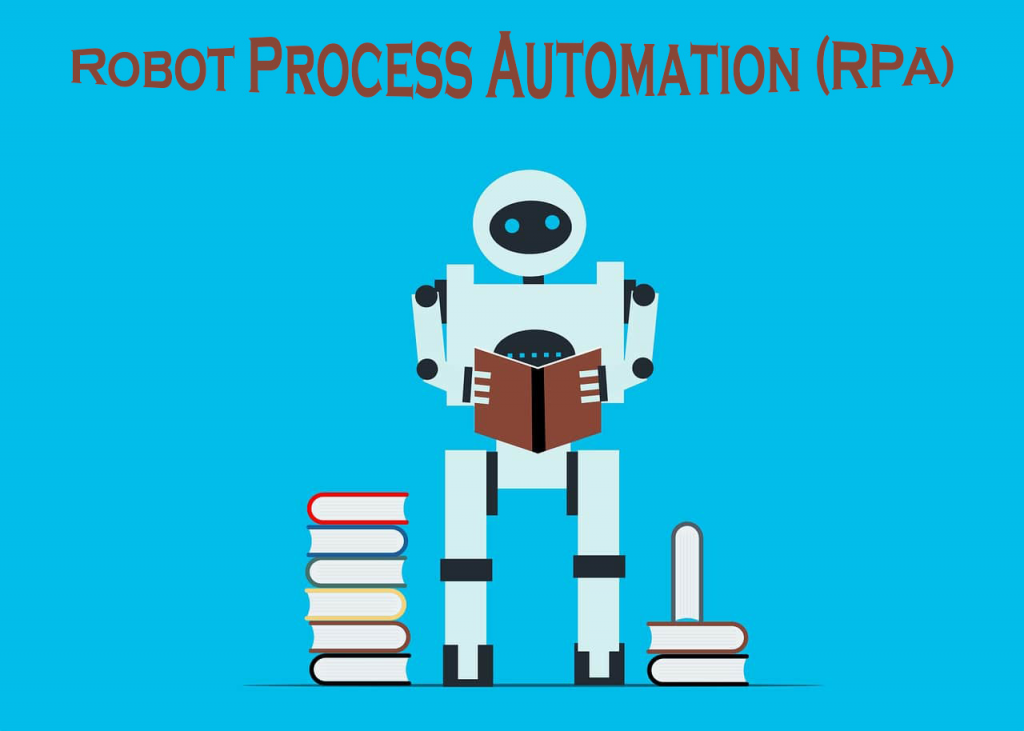In this R-Pro or Robotic Pro world, Robotic Process Automation (RPA) has captivated the ever-evolving technology sector by adding a whole new dimension of innovation. It allows making and scattering software robots to the global market as it specializes in interpreting the graphical user interface (GUI) and performing repetitive and process-based tasks.
According to Flobotics, workers spend 4 hours and 38 minutes per week on average performing duplicate tasks that could be automated.
Robot Process Automation is the process by which a software bot uses automation, computer vision, and machine learning to automate low-value clerical activities performed by humans. It is tailor-made for clearly defined, repeatable, and rules-based business processes like data entry, queries, calculations, transactions, and so on. Such software robots can even act as autonomous virtual workers as you can simply teach them to mimic a person’s actions on the screen. They can modify the ongoing applications and do predefined tasks while logging all their activities to the server. RPA allows the employees or workers in an organization to automate any business process by configuring virtual humans in the form of software or robots to capture, interpret, and manipulate existing applications through the Graphical user interface (GUI).

Reasons why robotic process automation is ruling the market:
Accuracy: RPA makes processes extremely accurate and uniform and much less prone to error or typographical error.
Low Technical Knowledge Requirements: No programming skills are necessary to configure a bot.
Compliance: Bots follow regulatory compliance rules to a tee and provide an audit trail history.
Non-Invasive Technology: RPA causes no disruption to underlying legacy systems and reduces IT burden.
Improved Employee Morale: Workers can dedicate more time to engaging, interesting work.
Productivity: Process cycles times are much faster compared to manual process approaches.
Reliability: Bots work 24x7x365 without interruption.
Consistency: Routine tasks are performed the same way every time.

Robot Process Automation (RPA) has benefited the technology sector and is an exciting tool for testers. The market’s need for a universal, zero-error tool is easily fulfilled by Robotic Process Automation. As the market demands good quality output in a shorter time window, RPA is being successfully utilized as a tool for software testing, making life easier for the testers. It helps get high-end output with no effort and full precision and eliminates the tedious end-to-end testing process.
How Robot Process Automation helps with testing:
The basic testing steps followed with an RPA are:
- Planning
- Generating and Amplifying Test Scripts
- Running and Debugging Test Scripts
- Analyzing Test Results and Reporting Defects
The RPA testing is used in tandem with other conventional tools for various good reasons:
No coding: You don’t have to remember any syntax with it.
Simplicity: It makes it much easier to develop a process via simple drag and drop, allowing for a far wider range or far more permutations of testing than humans can accomplish.
Scalability: Scalability is easily attained with RPA as it assigns a task to multiple workstations.
Cost-effective: RPA allows for a huge amount of cost reduction as almost no manpower is required.
Safety: It can carry out high-impact, resistance, and heavy tests, which is not feasible in the case of humans.
Accuracy: It helps achieve perfect precision as testing is performed by bots.
Productivity: Since testing takes place at a very fast pace and with no breaks, productivity is high.
Flexibility: The testing pattern doesn’t rely upon the type of software, be it web-based or window-based or be it a mobile application or machinery.
Best RPA Tools
Automation is rapidly changing global processes across industries. However, to accomplish automation tasks – whether simple or complex – one needs to design and develop an automation solution first, where RPA developers come into play. They design these automation tasks with the help of top tools present in the market that include UiPath, Blue Prism, and Automation Anywhere.
- UiPath:
It is one of the essential automation tools used on the Windows platforms. It consists of a drag and drop feature and is a user-friendly tool. With more than 300 in-built automation components, it cuts human intervention by automating iterating tasks. It also includes optimized development features for experienced users. - Automation Anywhere:
This RPA tool provides a user with secure, flexible, and scalable features. Launched in 2019 with a community edition, it has been made specifically to handle complex tasks and be used at the enterprise level. It can be amalgamated with diverse platforms and can extend functionality depending on user requirements, thus providing efficient performance. - BluePrism:
This tool is applied to a virtual workforce supported by software robots to manage automating business processes in a cost-effective and agile methodology. It is quite similar to UiPath as it too offers a drag and drop feature and is based on the C# (C sharp) programming language. Utilize ExpertRating’s C# Programming tutorial to learn the basics of this popular language, including GUI applications, in this introductory course.
Conclusion
RPA is a platform where you can automate any application without changing the approach and strategy. That’s why RPA is rapidly gaining acceptance in the testing of large-scale systems. Be a part of this new era of testing with Robot Process Automation (RPA) to simplify and fasten the process of testing and make it more precise than ever.
